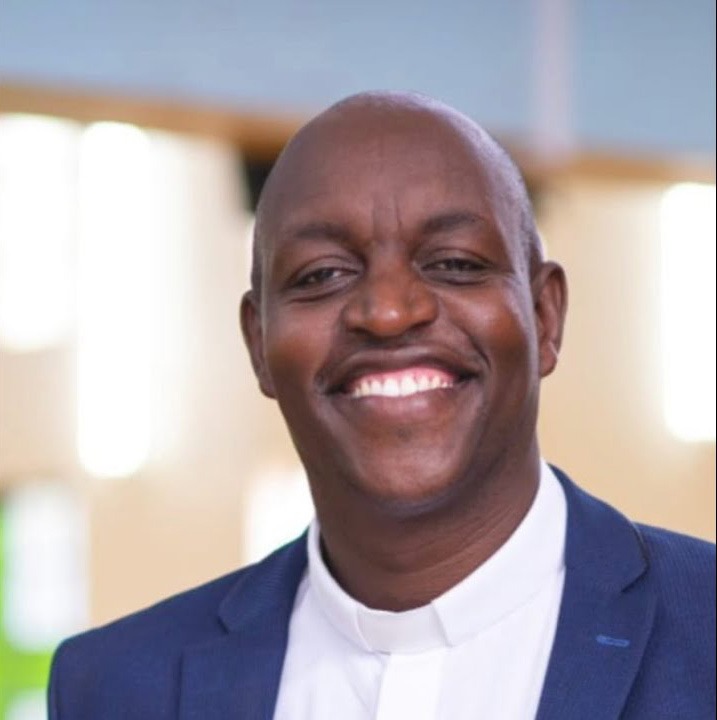It is Time for a New Mission Model
It is Time for a New Mission Model

Rev. Dr. Edward Buri, Presbyterian Church of East Africa (PCEA)
Wonder why the Church struggles to respond to contemporary challenges effectively? It is trapped in an old missionary model. When missionaries came, they established four main pillars of mission: the church, the school, the hospital, and the farm. These were the “contemporary” challenges then, and the structures they built were fitting. But the church has maintained that old model as if it were still contemporary. Anchoring present day mission on the missionary model mothers irrelevance.
In a post-COVID world, one would expect a shift in mission thinking—where physical sanctuaries remain important, but other mission structures rise in importance as well. There is such a thing as sanctuary saturation. A community suffers sanctuary fatigue when too many competing churches crowd into the same small space. Sanctuary paralysis occurs when the church centers all its mission in the sanctuary with no foot in the community. It is this faulty perspective that informs the growing altar-restricted thinking.
But millions continue to be poured into sanctuary construction, often blinding the faithful to other possible holy works in the community. Ironically, the sanctuary—majestic in its design and cost—remains one of the most expensive yet least utilized of all mission structures. We have yet to see a church near us intentionally expand the purpose of its cathedral for fuller utilization. Until then, these beautiful and costly buildings will come alive only once a week—and only for a few hours.
Competition has replaced cooperation, and denominational pride has overshadowed the greatest commandment—love. The result is a church that is more concerned with institutional survival than spiritual impact. Mission Schools that were once centers of excellent empowerment are now hastily assembled “income-generating projects.” The mainline church is stuck in its often awkward traditions and the newer churches are chasing facilitated miracles and quick prosperity.
The truth is clear: the church cannot keep running on this outdated model. It is tired, panting, and stalled. Enemies of the gospel rejoice because it is easy to manage a bashed and exhausted church. As it is, the church resembles a uniformed player who is ready only for ten minutes of play well knowing a full ninety-minute game lies ahead. They think they are too important to be substituted – but truth is that they are substitutable. The church has pulled its muscles – it has no stamina.
The time has come for a mission shift—a six-piece model that speaks to the real needs of our time:
The Church
Today, instead of moving together in power, it has pridefully splintered into denominations. This is a dark pride that mocks everything unity could achieve. It is common to find congregations on the same street blaring their speakers in competition. The challenge today is not establishment but transformation. To make an impact, the Church must move away from denominationalism and toward unity. This unity does not mean collapsing churches into a single structure, but lowering the walls of competition and lifting the banner of love. Ecumenism is no longer a dream; it is a necessity. The Great Commission presumes a united Church. Division stalls the mission and weakens its execution.
Food Security
When Jesus taught us to pray, He included the petition, “Give us this day our daily bread.” Food security is not a political slogan—it is a theological mandate. Agriculture and food production are no longer optional side activities; they are central to mission. In a continent that continues to battle hunger while having fertile soils, the church must rise to ensure that no child sleeps hungry. Feeding the hungry is not charity; it is discipleship in action.
Advocacy
Injustice remains one of the loudest cries of our time. In a world struggling with injustice, the church has no well-established justice functions. A good section of the church does not even think justice is their business! The missionaries did not train Christians on how to fight for their rights; such training would have amounted to teaching people how to overthrow the imperial government!
Justice has become the social language of Gen Z—the most restless and vocal generation. To reach them, we must learn and speak this language. The church must be present in courtrooms, on the streets, and in policy tables—not as troublemakers but as truth-tellers. Advocacy is not an option; it is the new pulpit from which we declare the kingdom of God.
Job Creation
In an era of high unemployment, especially among the youth, job creation is mission. The church cannot limit itself to prayers for prosperity while ignoring the despair of idleness. This is where talentpreneurship comes in—helping people turn their God-given talents into productive ventures. When a young person discovers how to convert their art, skill, or craft into sustainable work, they find dignity, purpose, and freedom. A job is not just an income; it is deliverance from despair.
People Rehabilitation
Drugs, delinquency, and destructive lifestyles are chains that bind millions. Sobriety is mission. Rehabilitation is no longer a side ministry for a few specialists—it must be at the heart of the church’s witness. Jesus came to set captives free, and in our time, the captives include those enslaved by substances, crime, and hopelessness. A church that does not heal wounds in its streets will remain irrelevant in its sanctuaries.
Apologetics
Discipleship in the contemporary world is not just about having faith but about standing for it. In a culture of doubt, skepticism, and constant questioning, believers must have what we may call “faithfidence”—a confidence in their faith that can withstand scrutiny. Apologetics equips Christians not only to believe but to explain, defend, and embody their convictions. Without this, discipleship collapses into shallow excitement that cannot endure storms.
These six elements together form a model that can carry the church into the future. But they will not stand on their own. They require enablers. Mission today must be resourced, theologically grounded, and technologically driven. Resourcing in the context of a united church see that the church doesn’t become a beggar and dependent on entities that may not align with the gospel. Without theology, the church becomes directionless, chasing trends without an anchor. Without technology, the mission stalls. Technology is not a luxury; it is the bloodstream of mission today. The church that innovates with technology will thrive, while the one that ignores it will slowly die. To ignore technology is to ignore the mission itself.
The church must stop pretending that the old model is still working. It is time for a new mission model. Let the one who has ears hear what the Spirit says to the church.
Rev. E. Buri
Printed with permission from the author. Rev. Dr. Edward Buri is a multifaceted individual whose expertise spans Theology (Parish and Public), Youth Ministry, Ethics and Development, Biblical Studies as well Media and Communication. Rev. Dr. Buri has studied in the University of Nairobi (Kenya), Princeton Theological Seminary (USA) and University of Pretoria (South Africa).
Key Takeaways
- The old four-pillar mission model (church, school, hospital, farm) no longer addresses contemporary challenges.
- A new six-piece mission model includes unity, food security, advocacy, job creation, rehabilitation, and apologetics.
- Mission today must be resourced, theologically grounded, and technologically enabled.
FAQs
Q: What is wrong with the old missionary model?
A: It focuses on outdated structures, leaving the church unprepared to address today’s challenges like unemployment, injustice, and secularism.
Q: What does the new mission model emphasize?
A: Unity, food security, justice advocacy, job creation, rehabilitation, and apologetics as central to mission in a modern context.
Q: Why is technology critical in mission today?
A: Technology fuels communication, discipleship, and outreach, making it a lifeline for a church that wants to remain relevant.
news via inbox
Don’t miss a moment—subscribe now and be the first to know when new stories drop.









